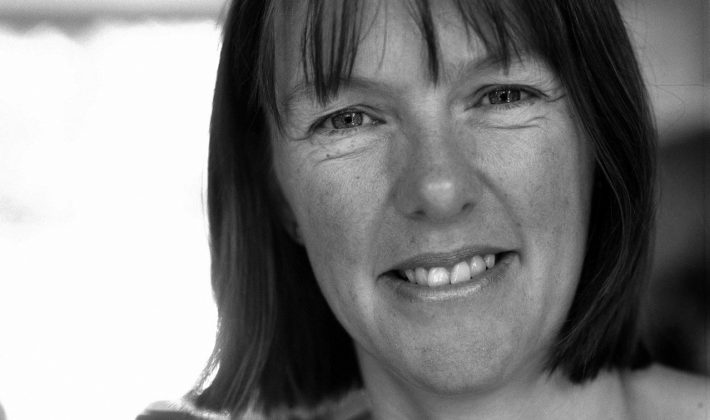If you want to write creative non-fiction, please read Kathleen Jamie. Why? Because she’s a poet. Forget daffodils. What poets know about writing craft is stuff they don’t teach you in journalism school: a forensic choice of the right word; a keen eye for everyday yet significant detail; and a way of telling a story through imagery.
Kathleen Jamie’s writing possesses all this in abundance. Her two books of essays – Findings (2005) and Sightlines (2012) – are masterclasses in observation and effective imagery. Both are frequently cited as landmarks in the world of writing about landscape, nature and the environment.
Jamie was born in 1962 and raised near Edinburgh. At 19 she won an Eric Gregory award and she has written ever since – including several award winning collections of poetry, and a travel book Among Muslims (2002). But it’s her two recent essay collections that are really significant for anyone who wants to learn how to apply a poet’s craft to their own writing.
Both ‘Findings’ and ‘Sightlines’ collect her reflections on the landscapes around her. Some events of Jamie’s life are related briefly: in ‘Findings’ she has young children, her husband is hospitalised with pneumonia, her own mother has a stroke and she has to persuade her grandmother to move into a home. In ‘Sightlines’ she is coming to terms with her mother’s death. But these events are not foregrounded: this is not character- or action-driven narrative. It’s not structured like a Hollywood screenplay, in three acts. Instead, these essays function more like poems, with a string of images threaded together, and when you look back you realise that the whole is much greater than the sum of the parts.
I started reading Jamie because she lives in Fife, on the east coast of Scotland, my childhood home, and I approached ‘Findings’ hoping to find descriptions of familiar places. You can certainly read these essays for the pleasure of experiencing wild landscapes – and it’s almost impossible to remain insensitive to the environment after reading Jamie. Her descriptions of plastic washed up on remote beaches and of how we have decimated whale populations are deeply affecting.
Her essays also show us a way to look at the concrete and everyday world around us, whether it’s a remote island or a hospital. Jamie illuminates objects with meaning. Look how she writes about an X-ray in ‘Fever’: “The X-ray gives an external image of something within ourselves. An image we have to draw out of ourselves, that we might see it in front of our eyes and so take it within ourselves.” This is what Jamie does, over and over.
Her writing is an argument for the value of noticing. Poets pay attention. They pay attention to language, and they pay attention to what’s around them. And when they pay attention, they find fresh images. Jamie tells a friend that she never prays, then feels guilty that she hasn’t prayed, even as her husband is seriously ill. “But,” she writes, “I had noticed, more than noticed, the cobwebs and the shoaling light, and the way the doctor listened, and the flecked tweed of her skirt, and the speckled bird and the sickle-cell man’s slim feet. Isn’t that a kind of prayer? The care and maintenance of the web of our noticing, the paying heed?”
The poet Bill Herbert has said that for poets, metaphor is a method of thought. A poet might think ‘that lampshade reminds me of my aunt. So, can I talk about the lampshade in the way I’d usually talk about my aunt?’ Making images like this allows us to think about the objects around us in new ways, to make new associations, to disrupt habitual ways of thinking.
What’s more, poets build chains of images to take us to unexpected places. So “Fever” starts with cobwebs, and cobwebs, says Jamie, are like satellite dishes and also like eastern bazaars. Her husband’s lung shows traces of pneumonia – the lung’s alveoli, spread out, would look like cobwebs. A dead bird with its chest burst open is the last thing the family see as they leave the hospital, while her husband’s chest is healing. Paraphrasing like this does no favours to the language and balance of the original essay but the point is that the connections exist, yet they are not explicit or spelled out. This essay is structured through the connections between the images. This is a poet’s method of thinking and narrating.
In both collections, Jamie makes her own way on the landscape of writing – leaving a trail for other women to follow. Writers on landscape are often male, single or both – from Gavin Maxwell to Robert Macfarlane. But Jamie’s writing has created a path for women in the natural world – books like Cheryl Strayed’s Wild (2012), Amy Liptrot’s The Outrun or Jean Sprackland’s Strands (2012).
So read her soon.
Ebba Brooks is a former journalist and book festival founder. These days she teaches creative writing at the University of Leeds and digital skills at the University of Salford. You can read more about her on her blog.

